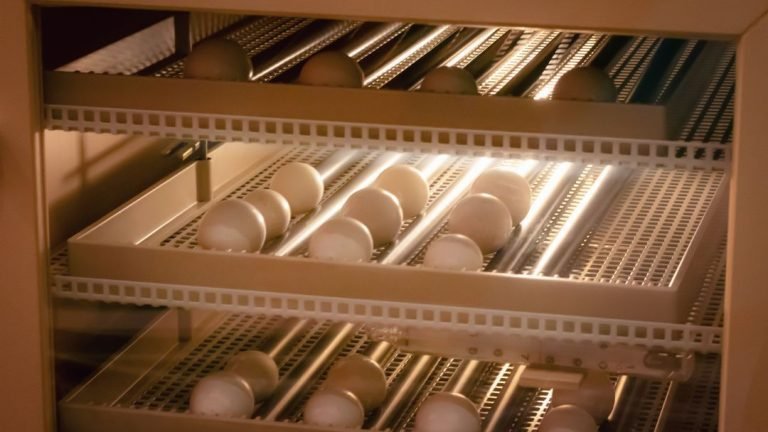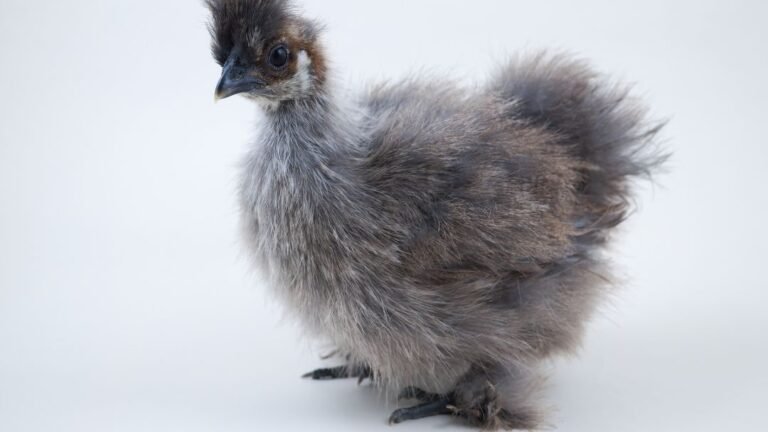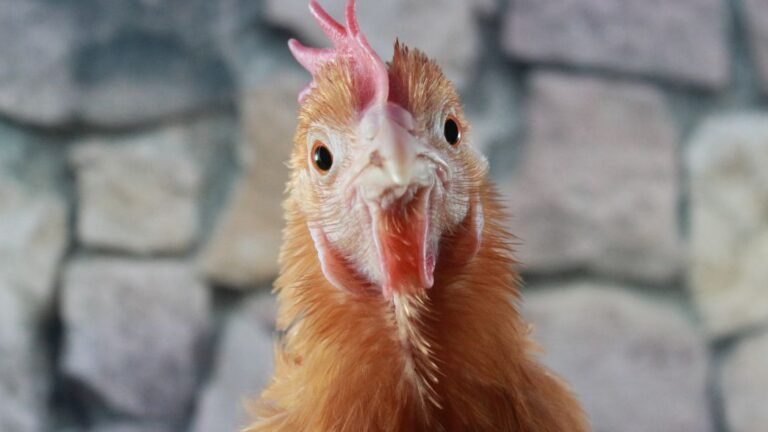Looking for a free chicken saddle pattern for regular-sized hens? Here is an accurate and concise solution for your needs.
Keep reading to find out more about this helpful pattern. If you have regular-sized hens and want to provide them with some extra comfort and protection, a chicken saddle is the perfect solution. This handy accessory not only protects your hen’s back from feather loss and injury but also adds a touch of style to their appearance.
While there are many patterns available, finding a free and reliable one can be a challenge. Luckily, we have a practical and easy-to-follow pattern that you can use to create your own chicken saddle. We will guide you through the process and provide you with all the necessary information and instructions. Let’s get started!
Why Regular-sized Hens Need Protection
When it comes to taking care of our backyard chickens, ensuring their safety and well-being should be a top priority. Regular-sized hens, just like any other living creatures, are susceptible to various risks and injuries that can impact their health and quality of life. In this section, we will explore the reasons why regular-sized hens need protection and how a free chicken saddle pattern can play a crucial role in keeping them safe.
Protecting Your Hens From Feather Pecking And Mating Injuries
Feather pecking and mating injuries are two common problems that regular-sized hens may encounter. Feather pecking occurs when one hen relentlessly pecks and plucks the feathers of another hen, which can lead to bald spots, skin irritation, and potential infection. Mating injuries, on the other hand, happen when roosters mount hens during the mating process and can cause feather loss, skin abrasions, and even deep wounds.
By using a free chicken saddle pattern, you can provide an effective solution to protect your hens from these injuries. The chicken saddle acts as a protective garment that covers the hen’s back and wings, shielding them from pecking and reducing the chances of mating injuries. This not only promotes the hens’ physical well-being but also maintains their overall feather quality, allowing them to lead a comfortable and stress-free life.
Understanding The Role Of Chicken Saddles In Ensuring Their Safety
Chicken saddles serve as a barrier between a regular-sized hen’s delicate feathers and the aggressive pecking or mounting behaviors of other chickens. These specially designed coverings provide a protective layer, preventing direct contact between the hens’ vulnerable skin and the potential sources of injury. A well-fitted chicken saddle can significantly minimize the risk of feather damage, wounds, and infections, maintaining the hens’ overall health and happiness.
Furthermore, chicken saddles allow the regular-sized hens to continue engaging in their natural behaviors without hindrance. They can move, explore, and socialize just like any other chicken, all while being safeguarded against potential harm. The innovative design of the chicken saddle ensures both comfort and flexibility for the hens, enabling them to enjoy a fulfilling and enriched life in their backyard environment.
Benefits Of Using A Free Chicken Saddle Pattern
Utilizing a free chicken saddle pattern offers a multitude of benefits for those looking to protect their regular-sized hens. By using such a pattern, you can:
- save money by creating your own chicken saddles instead of purchasing expensive alternatives
- customize the size and design of the saddle to best fit your hens’ individual needs
- showcase your creativity by selecting different fabrics, colors, and patterns for the saddles
- participate in a sustainable and eco-friendly practice by reusing materials
With these advantages, using a free chicken saddle pattern not only provides a practical solution for protecting your regular-sized hens but also allows you to add your personal touch and contribute to a more sustainable lifestyle.
Step-by-step Guide To Making Your Own Pattern
In this step-by-step guide, we will walk you through the process of making your own pattern for a free chicken saddle. With this handy accessory, you can protect your regular-sized hens from feather loss and injuries. So, let’s get started!
Gathering The Necessary Materials For Your Chicken Saddle
Before diving into the pattern-making process, you’ll need to gather a few materials to ensure a successful outcome. Here are the items you’ll need:
| Materials | Quantity |
|---|---|
| Fabric | 1 yard |
| Elastic | 1/4 inch wide, 10 inches long |
| Thread | Matching color |
| Scissors | 1 pair |
| Pins | A few |
| Sewing machine or needle | 1 |
| Ruler or measuring tape | 1 |
Now that you have your materials ready, let’s move on to taking measurements for the perfect fit.
Taking Measurements To Customize The Pattern
Customization is key for ensuring your chicken saddle fits your hen perfectly. Here’s how to take the necessary measurements:
- Hold your hen gently but firmly to avoid any discomfort.
- Measure the distance between the base of her neck and the start of her tail feathers. This will determine the length of your saddle pattern.
- Measure the width of her back, where the saddle will sit. This will help you create a snug yet comfortable fit.
With accurate measurements in hand, you’re now ready to cut and sew the fabric to create your chicken saddle.
Cutting And Sewing The Fabric To Create The Saddle
Follow these step-by-step instructions to cut and sew the fabric for your chicken saddle:
- Place the fabric on a flat surface and fold it in half.
- Using your measurements, mark the length and width of the saddle pattern on the fabric.
- Carefully cut along the marked lines, ensuring to keep the fold intact.
- Next, fold the fabric in half widthwise and sew along the curved line (the top edge of the saddle).
- Turn the fabric right side out, creating a pocket for your hen’s back.
- Finally, insert the elastic into the pocket and sew the ends securely.
Now that your saddle is taking shape, let’s explore some additional features you can add for both style and functionality.
Adding Extra Features For Style And Functionality
Enhance the functionality and appearance of your chicken saddle by considering these additional features:
- Reinforced edges: Add extra stitches along the edges of the saddle to increase durability and prevent fraying.
- Decorative embellishments: Personalize the saddle by sewing on decorative buttons, patches, or embroidery.
- Adjustable straps: Opt for adjustable elastic straps to accommodate different hen sizes as they grow or change over time.
By incorporating these extra features, you can create a chicken saddle that not only serves its purpose but also showcases your creativity.
Now that you’ve completed the step-by-step guide, you’re equipped with the knowledge and instructions needed to make your very own chicken saddle pattern. So, grab your materials, get measuring, and start sewing!
Choosing The Right Material And Design For Your Chicken Saddle
When it comes to protecting your regular-sized hens from injuries or feathers being plucked by roosters, chicken saddles are a smart and practical solution. But how do you choose the right material and design for these saddles? Let’s explore the factors to consider, popular fabric options with their pros and cons, and how you can personalize your chickens’ saddles with patterns and colors.
Factors To Consider When Selecting Fabric For Your Saddle
When selecting the fabric for your chicken saddle, it’s important to keep a few factors in mind. Here are the key considerations:
- Durability: The fabric should be sturdy enough to withstand the hen’s daily activities and any potential tugs or pulls from roosters. Look for materials known for their strength and longevity.
- Breathability: Chickens can easily overheat, especially during warmer months or in high temperatures. Choose a fabric that allows proper airflow and ventilation to keep your hens cool and comfortable.
- Flexibility: Hens need to move and stretch freely without feeling restricted by the saddle. Opt for fabrics that have some stretch or give, allowing your chickens to move comfortably.
- Easy to Clean: Regular cleaning of the saddle is crucial to maintain good hygiene. Select fabrics that are easy to clean and quick to dry, ensuring your hens stay healthy.
Popular Fabric Options And Their Pros And Cons
Now that you have an idea of what to consider, let’s explore some popular fabric options for chicken saddles along with their pros and cons. Take a look at the table below:
| Fabric Option | Pros | Cons |
|---|---|---|
| Cotton | Soft and breathable | May shrink after multiple washes |
| Denim | Durable and resistant to tears | Can be heavier and less flexible |
| Spandex/Stretch Fabric | Offers great flexibility and comfort | May not be as durable as other fabrics |
| Neoprene | Waterproof and easy to clean | Can be less breathable |
Using Patterns And Colors To Personalize Your Chickens’ Saddles
Lastly, you can add a touch of personalized style to your chickens’ saddles by using patterns and colors. This not only makes them look cute but also helps you easily distinguish between hens and identify any saddle-related issues. Here are a few tips to keep in mind:
- Pattern Selection: Choose patterns that match your hens’ personalities or your own personal taste. Floral, polka dots, or even simple geometric patterns can add a fun and whimsical touch.
- Color Choices: Consider using bright and vibrant colors that stand out, making it easy to spot your hens from a distance. However, avoid colors that could attract unwanted attention from predators.
- Secure Attachments: Make sure the patterns and colors are securely attached to the saddle to prevent any choking hazards or discomfort for your chickens.
By considering these factors and personalizing your chickens’ saddles with patterns and colors, you can ensure the utmost comfort and protection for your beloved hens while adding a touch of style.
Ensuring A Comfortable And Secure Fit For Your Hens
When it comes to keeping your hens comfortable and protected, a chicken saddle is an essential accessory. These free chicken saddle patterns for regular-sized hens not only add a touch of style to your flock but also provide a secure fit that ensures your chickens are cozy and safe. In this article, we will dive into the key steps to ensure a comfortable and secure fit for your hens, including measuring and adjusting the saddle for a proper fit, securing the saddle to ensure it stays in place, and regularly monitoring and adjusting for optimal comfort and protection.
Measuring And Adjusting The Saddle For Proper Fit
To ensure a comfortable fit for your hens, it’s important to measure and adjust the saddle accordingly. Here are the steps you can follow:
- Measure the length and width of your hen’s back, ensuring you have accurate measurements for a precise fit.
- Using these measurements, select the appropriate size from the free chicken saddle pattern.
- If the saddle’s straps are too loose or tight, adjust them accordingly to ensure a snug fit without restricting movement.
How To Secure The Saddle And Ensure It Stays In Place
Once you have properly measured and adjusted the saddle, it’s crucial to secure it correctly to ensure it stays in place. Consider the following steps:
- Place the saddle on your hen’s back so that the straps align with the wings and tail.
- Fasten the straps securely, making sure they are neither too tight nor too loose.
- Double-check the fit to ensure it is snug but comfortable, allowing for natural movement.
- Make any necessary adjustments to the straps for a better fit, if needed.
Regular Monitoring And Adjustment For Optimal Comfort And Protection
After securing the saddle, it’s crucial to regularly monitor and adjust it to ensure optimal comfort and protection for your hens. Follow these tips:
- Monitor your hens for any signs of discomfort or rubbing, which may indicate the need for adjustments.
- Check the straps regularly to ensure they remain secure and properly positioned.
- If you notice any loosening or rubbing, make the necessary adjustments to maintain a comfortable fit.
- Periodically remove the saddle for cleaning and inspection, ensuring it is still providing the intended protection.
By following these steps and regularly monitoring the fit of the chicken saddle, you can ensure your hens are comfortable and well-protected. Now, you can confidently enhance the style and safety of your flock with these free chicken saddle patterns for regular-sized hens. Happy hen keeping!
Tips For Keeping Your Saddles Clean And Durable
When it comes to protecting your hens, chicken saddles are a great investment. These handy garments help prevent feather loss and injuries caused by aggressive roosters or rough mating. However, to ensure the longevity and functionality of your chicken saddles, it’s important to keep them clean and well-maintained. In this section, we’ll share some essential tips on proper cleaning techniques, storage and maintenance, as well as when to replace your saddles.
Proper Cleaning Techniques To Keep Saddles Odor-free
To keep your chicken saddles odor-free and in great condition, it’s crucial to follow proper cleaning techniques. Here are some steps you can take:
- Start by removing any visible dirt, debris, or droppings from the saddle. You can gently brush off the surface using a soft brush or cloth.
- Next, prepare a solution of mild dish soap and warm water. Dip the saddle into the soapy water and gently scrub it using your hands or a soft brush.
- Rinse the saddle thoroughly with clean water to remove any soap residue. Make sure to rinse both the inside and outside of the saddle.
- After rinsing, gently squeeze out any excess water and pat dry the saddle with a clean towel.
- Allow the saddle to air dry completely in a well-ventilated area before storing or reusing it.
By following these cleaning techniques, you can effectively remove dirt, stains, and odors from your chicken saddles, keeping them fresh and hygienic for your hens.
Storage And Maintenance To Prolong The Lifespan Of Your Saddles
Proper storage and maintenance play a vital role in prolonging the lifespan of your chicken saddles. Here are some tips to consider:
- Always make sure your saddles are completely dry before storing them. Moisture can lead to mold or mildew growth.
- Find a suitable storage area for your saddles, such as a clean and dry container or a hanging rack.
- Avoid storing your saddles in direct sunlight, as prolonged exposure to UV rays can cause fading or damage to the fabric.
- Regularly inspect your saddles for any signs of wear and tear, such as loose threads or frayed edges. Repair or replace damaged saddles promptly to maintain their protective function.
By following these storage and maintenance tips, you can ensure that your chicken saddles stay in great shape for a longer period, providing optimal protection for your hens.
Replacing Saddles As Needed To Maintain Protection For Your Hens
Sadly, no chicken saddle lasts forever, no matter how well you take care of it. It’s important to monitor your saddles regularly for signs of deterioration or damage. If you notice any of the following, it’s time to consider replacing the saddle:
- Visible tears or holes in the fabric that compromise its protective function
- Elastic bands that have become worn out or stretched beyond their elasticity
- Significant discoloration or fading of the fabric
Replacing your saddles when necessary will allow you to maintain the necessary level of protection for your hens, ensuring their feathers and skin remain safe from any harm.
Conclusion
The free chicken saddle pattern provided in this blog post is a convenient and cost-effective solution for protecting your regular-sized hens. With a simple design and easy-to-follow instructions, you can create a comfortable and stylish saddle that not only keeps your chickens safe from injuries but also adds a touch of uniqueness to their appearance.
Give it a try and enjoy the benefits of a happy and healthy flock!




